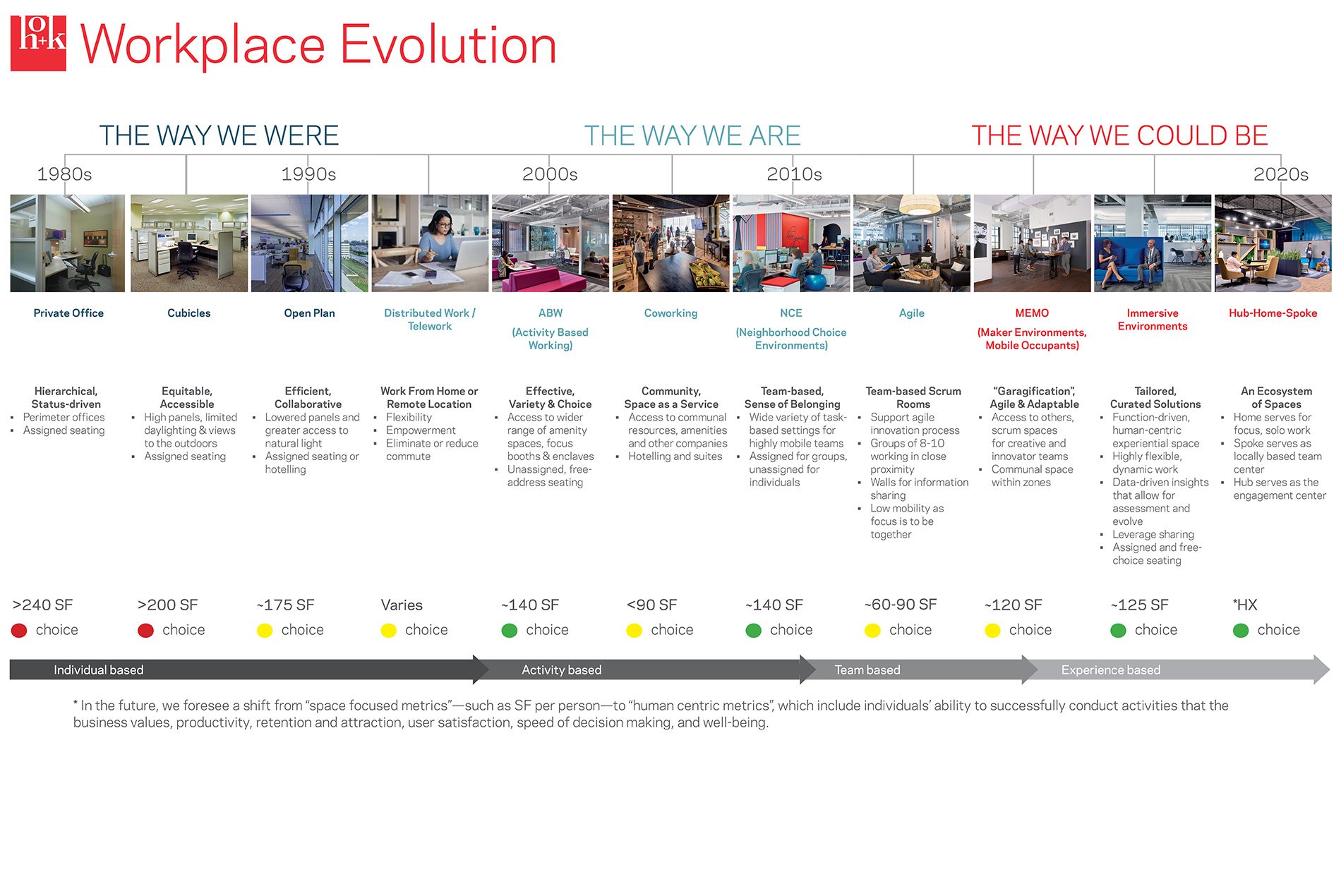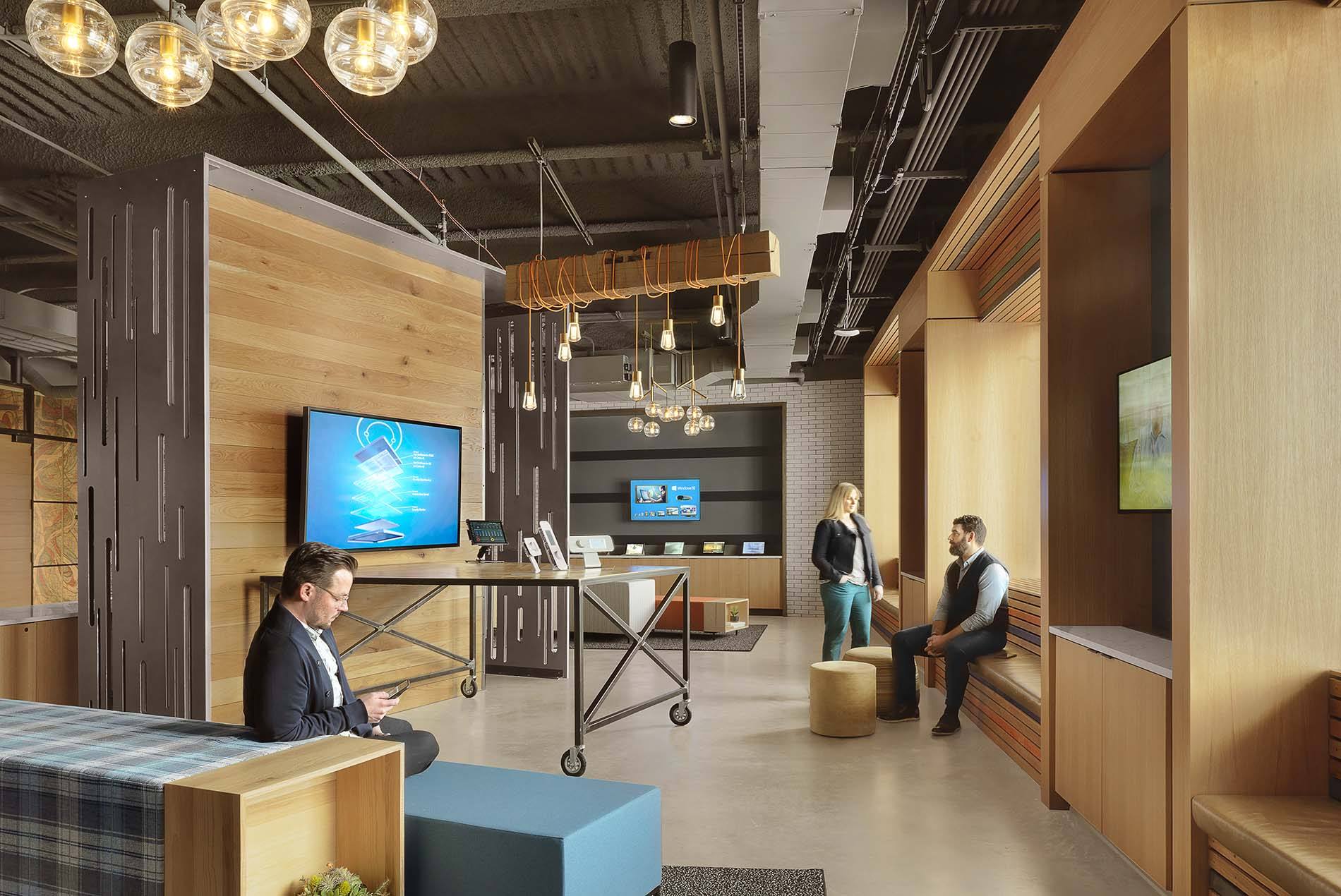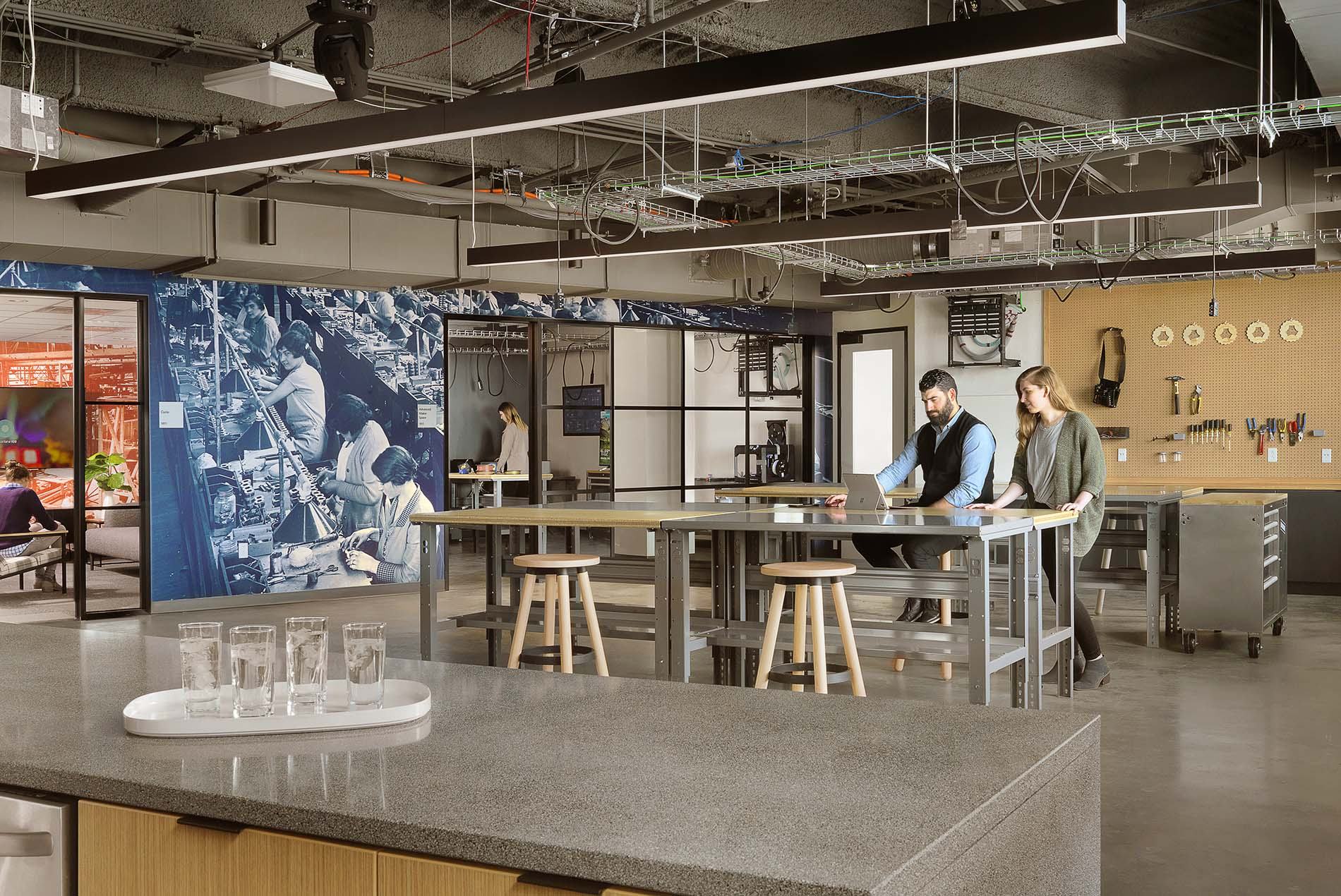The open office floor plan came under increased scrutiny after COVID-19 disrupted our workplace norms. As employees returned to their cubicles and shared spaces after the pandemic, many questioned their effectiveness. And for good reason.
Open plans promote teamwork if thoughtfully designed. Yet the required level of diligence is often overlooked. We’ve all seen more than our share of ill-conceived open plan offices that cram employees into generic cubicle farms to cut costs. While the open office isn’t dead, it needs a serious remodel.
Organizations can thrive with the open office—if they recognize and rectify its past pitfalls. When tailored for flexibility and collaboration—and fit for purpose—open offices can still be highly effective.
The Evolution of the Open Floor Plan
The open plan model gained traction in the early 2000s to boost collaboration but gradually devolved into a cost-cutting strategy—often at the expense of employee comfort.
The pandemic ushered in a renewed emphasis on human-centric design, moving away from mere spacing-saving solutions. Even so, many companies continue to default to monotonous rows of benching.
It’s important to recognize that “open environments” don’t necessarily equate to “open plan.” The latter typically features a uniform layout with low or no cubicle walls and assigned seats—essentially a one-size-fits-all approach.
In recent years, designers have pivoted from the “cubeland” model to dynamic ecosystems that enable new ways of working, such as:
- Activity-Based Workplaces (ABW)
- Neighborhood-Based Choice Environments (NCE)
- Maker Environments, Mobile Occupants (MEMO)
- Hub-Home-Spoke Ecosystem
- Immersive Environments
These models demonstrate more agile, purpose-driven approaches, and empower people with what they want most: options, choice and control. Instead of constraining employees to one rigid setup, they provide an array of spaces to ignite productivity and innovation.
From WorkPLACE to WorkHOW
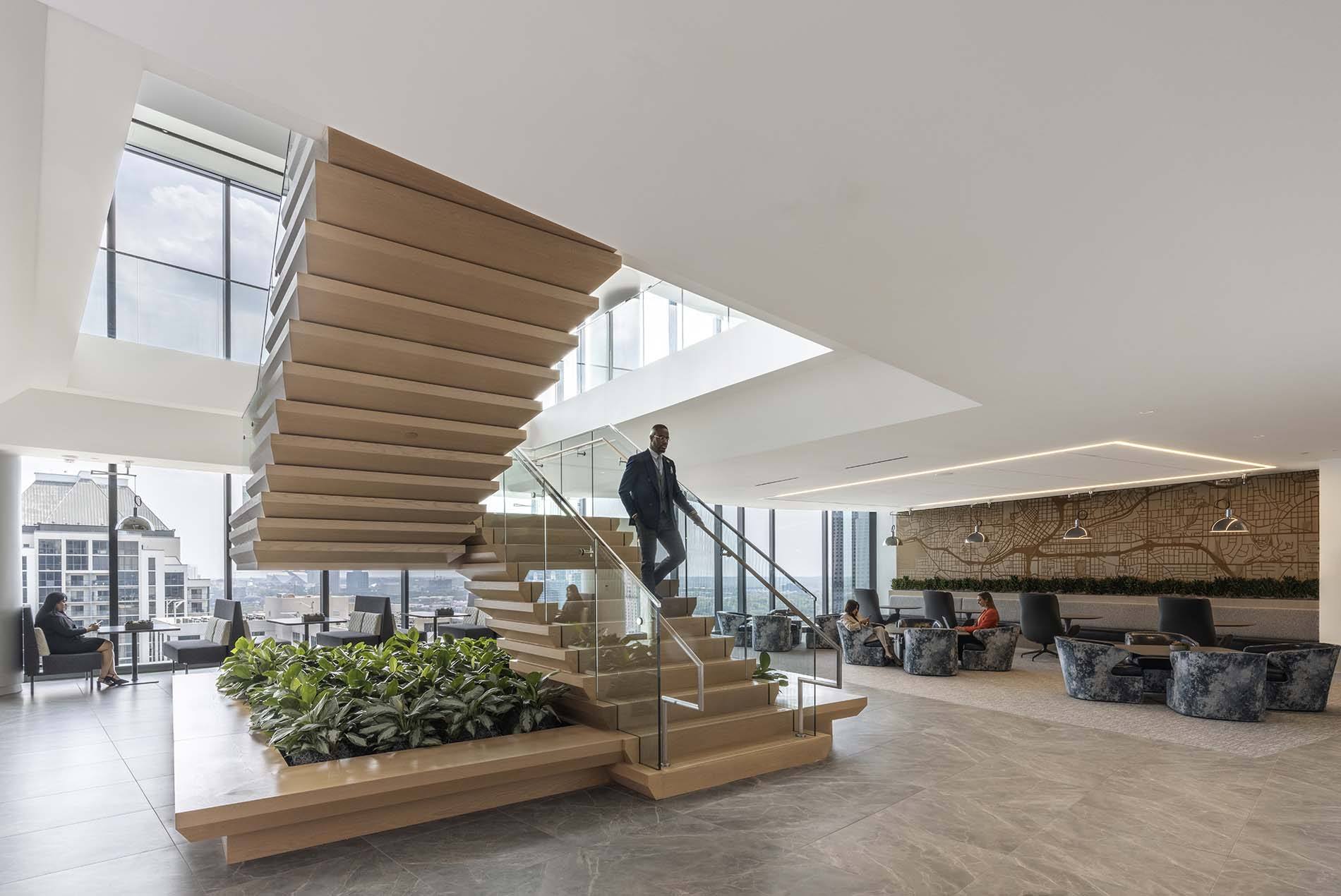
Today’s workplaces must evolve beyond static backdrops tethering workers to assigned seats. They need variability and agility to accommodate diverse needs.
Workspaces should sync with an organization’s culture and people. A sales-driven company, for example, needs very different spaces than a creative or research-focused business reliant on collaboration.
Clinging to a one-size-misfits-all approach fails a company’s most valuable asset: its people. A 2023 Gallup poll revealed that 66% of U.S. employees feel disengaged at work. Ineffective workplaces can torpedo productivity and satisfaction.
Forcing all employees into cookie-cutter environments ignores unique cultures, needs, work styles and industries. Understanding specific needs drives better solutions. While open plans help some people, they’re productivity killers for others.
So, how can companies create the right work environments for their people? They can start by partnering with experts to identify their DNA and create tailored environments responding to their needs.
Our Workplace Formula: Data + Design
HOK uses a tiered approach to optimize workplace solutions:
- Understand organizational DNA.
- Analyze the modalities of work (the “6 Cs”: Concentrate, Commune, Create, Congregate, Contemplate, Convivial).
- Plan spatial sequencing for maximum efficiency.
- Consider group and organizational dynamics (Power of the 6 to the 48, which refers to optimal team and community sizes).
- Address DEIA and sensory needs.
- Define gathering profiles.
As society evolves from commodity-based to experience-based, place grows in importance. Offices must adapt to attract talent by supporting diverse work styles and fostering innovation and collaboration.
More organizations now curate workplace experiences to meet employee needs. This bespoke approach provides an “à la carte” menu of spaces, locations and services designed around people and their work.
Activity-Based Workplace (ABW) Solution
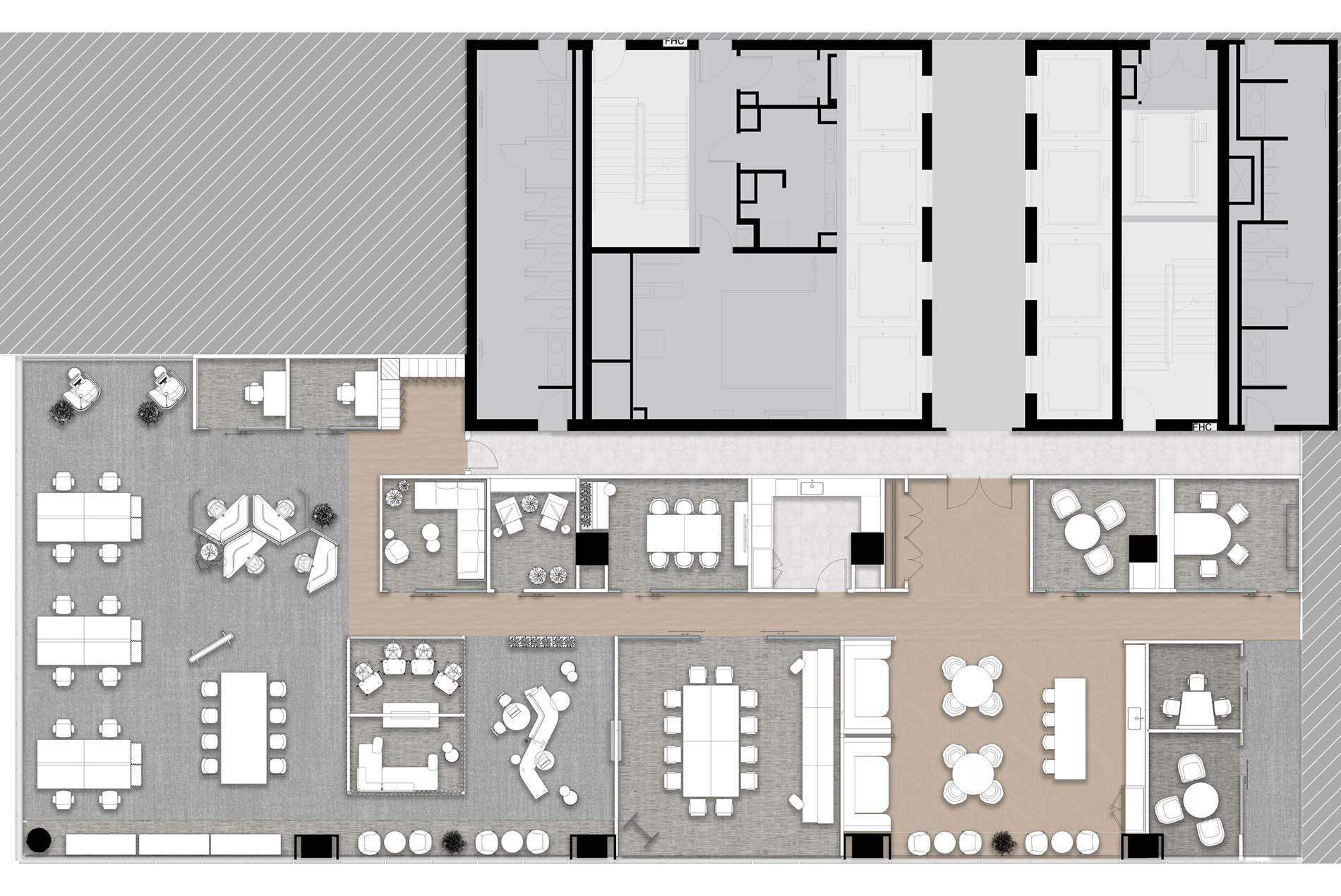
Though today’s knowledge workers no longer do repetitive tasks tied to one spot, many offices still promote sedentary behavior. Enter the Activity-Based Workplace (ABW). Over the past decade, ABW has emerged as a way to offer task-driven solutions that encourage movement and empower people to choose suitable space for what they need to do. ABW environments typically comprise an ecosystem of spaces.
Social hubs with food anchor ABW floors, surrounded by work points with phone booths and team areas. As people move more, they need flexible and task-specific solutions, not one desk per person.
Pinning employees to one spot all day is not just physically limiting—it can dull the mind. Giving employees an assigned space tethers them to that area, limiting their use of other office areas. People crave a change of scenery, a momentary break—a literal “fresh perspective.”
A misconception about free-choice (unassigned) workspaces is that people can’t sit in the same spot, or even the same area, every day. While movement is encouraged within free-choice workspaces, sitting in the same place every day is entirely acceptable if it suits an individual employee or group. But by enabling people to find the right spot that meets their functional and sensory needs, we’ve increased the likelihood that they will be more productive, even if they don’t move as much as other might.
Neighborhood-Based Choice Environment (NCE) Solution
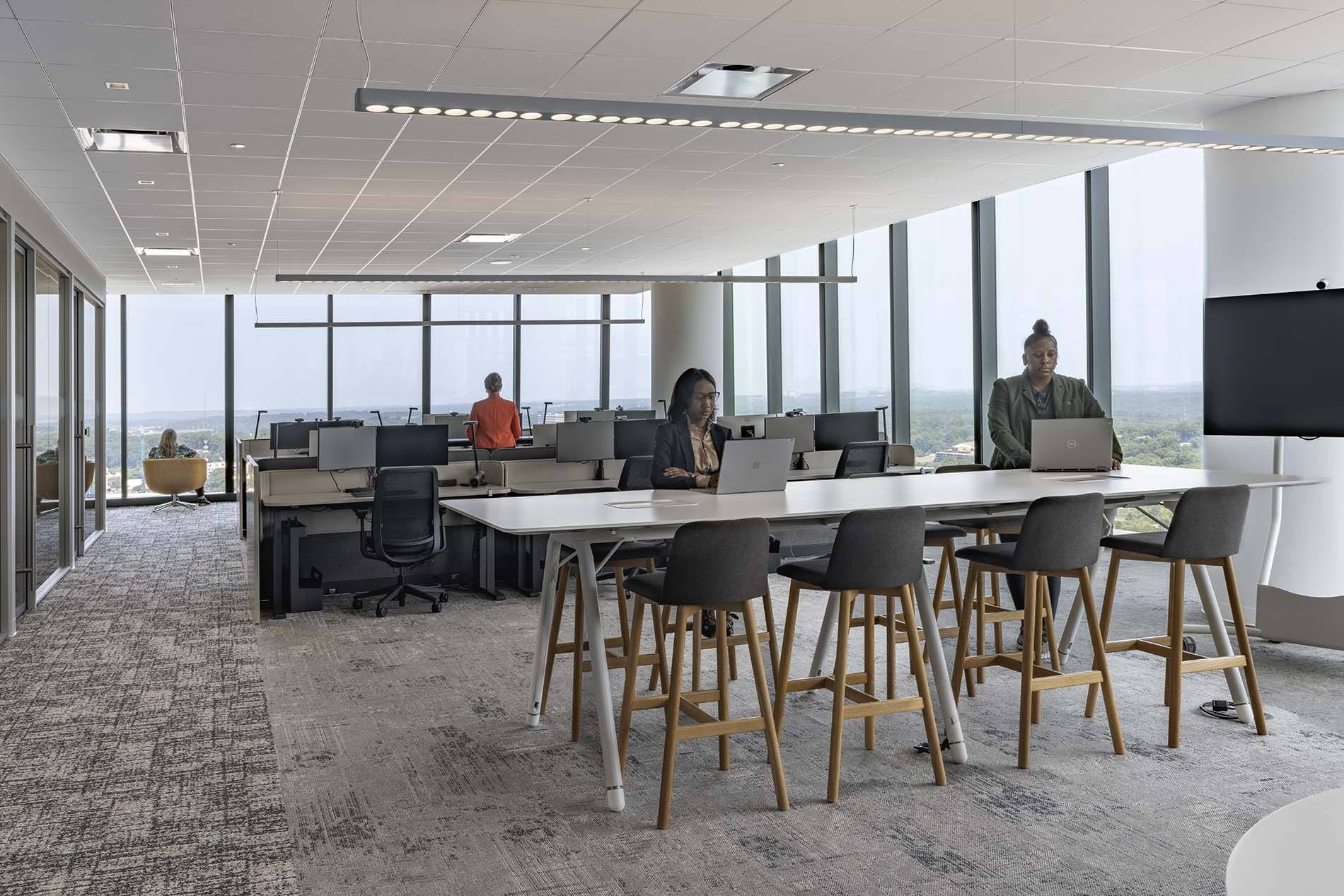
The ABW model originated in Europe and Australia and has evolved through multiple iterations. Yet, as companies sought to offer teams a home base—with a sense of belonging and identity—the Neighborhood-Based Choice Environments (NCE) concept emerged.
NCEs create a home for teams, balancing the need for a consistent base with the flexibility of diverse work settings. These environments promote team connectivity and belonging, helping to establish a unique team identity.
Our research shows the importance of psychological safety in workspaces. Drawing on our “Power of the 6 to the 48” philosophy, we’ve found individuals form strong bonds in groups of 4-6. By cultivating these small, interconnected groups, a “camp” mentality emerges, promoting community and openness. Expanding camps to “clans” of up to 24 and “tribes” of 36-48 members culminates in Dunbar’s number, 150—the suggested cognitive limit of 150 stable social relationships.
Understanding social dynamics and the spatial sequencing needed to support sensory and cognitive well-being guides our NCE designs. This leads us to emphasize spaces that promote a team mentality, belonging and safety.
Invesco, a global asset management leader, is reinventing its workplaces to better support employees and clients, ensuring alignment between its people, buildings and operations. This approach extends to the NCE approach at Invesco’s new Atlanta headquarters (above and below), with features aiming to:
- Showcase the brand.
- Enhance teamwork and productivity.
- Attract and keep top talent.
- Prioritize client-focused spaces.
- Emphasize sustainability.
While private offices and workstations remain unassigned for flexibility, their placement maximizes natural light. A standardized six-workstation layout supports collaboration and future adaptability. This allows departments to customize their areas, leading to distinct spaces for IT, HR, finance and more.
Central to the design is the idea of neighborhoods. These spaces converge around a central spine equipped with conferencing zones, booths, whiteboards, and both digital and traditional messaging systems in break areas. The transparency of this collaboration spine, from one end to the other, underscores a fundamental principle: While individual teams may have unique spaces, they remain interconnected within the larger organization.
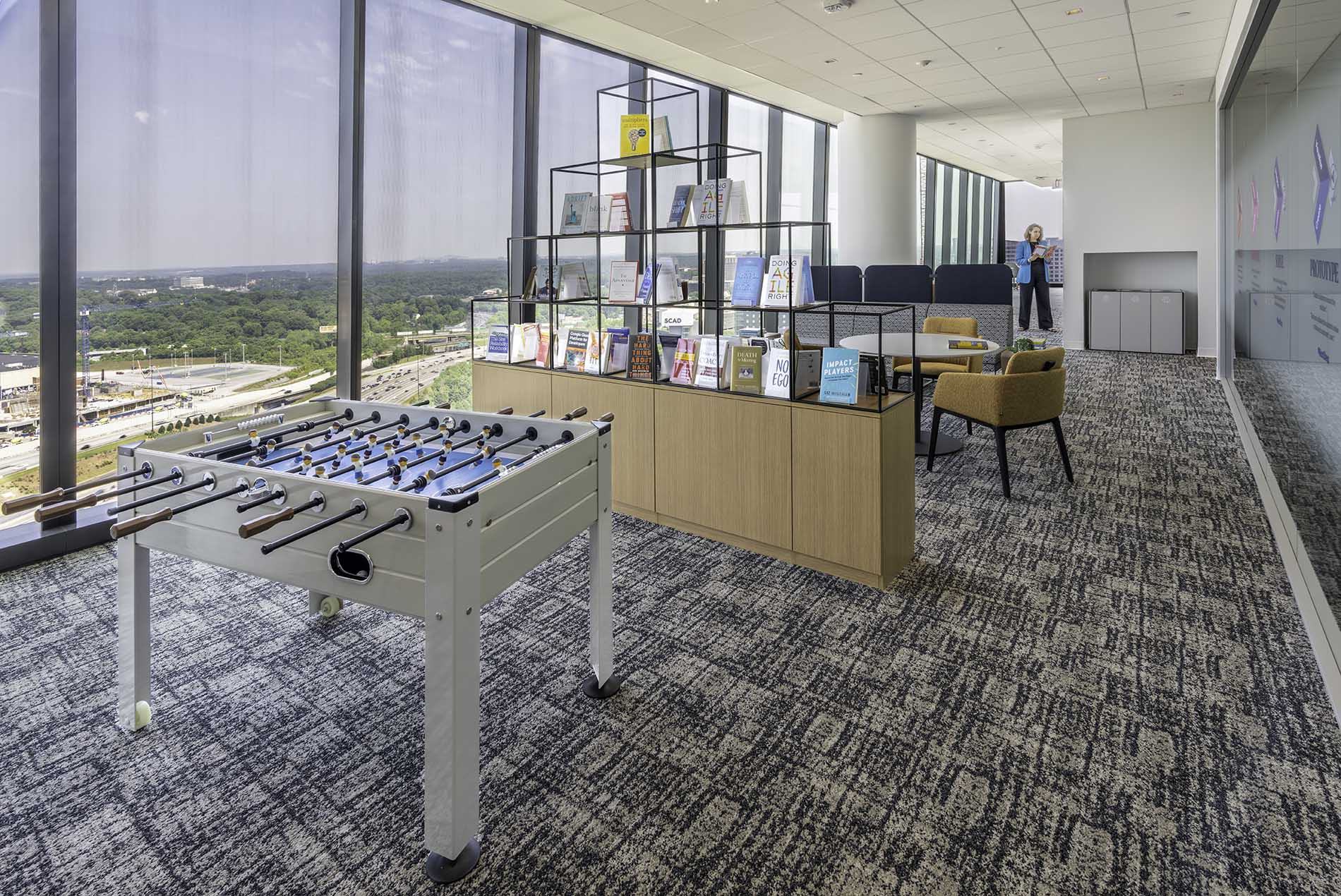
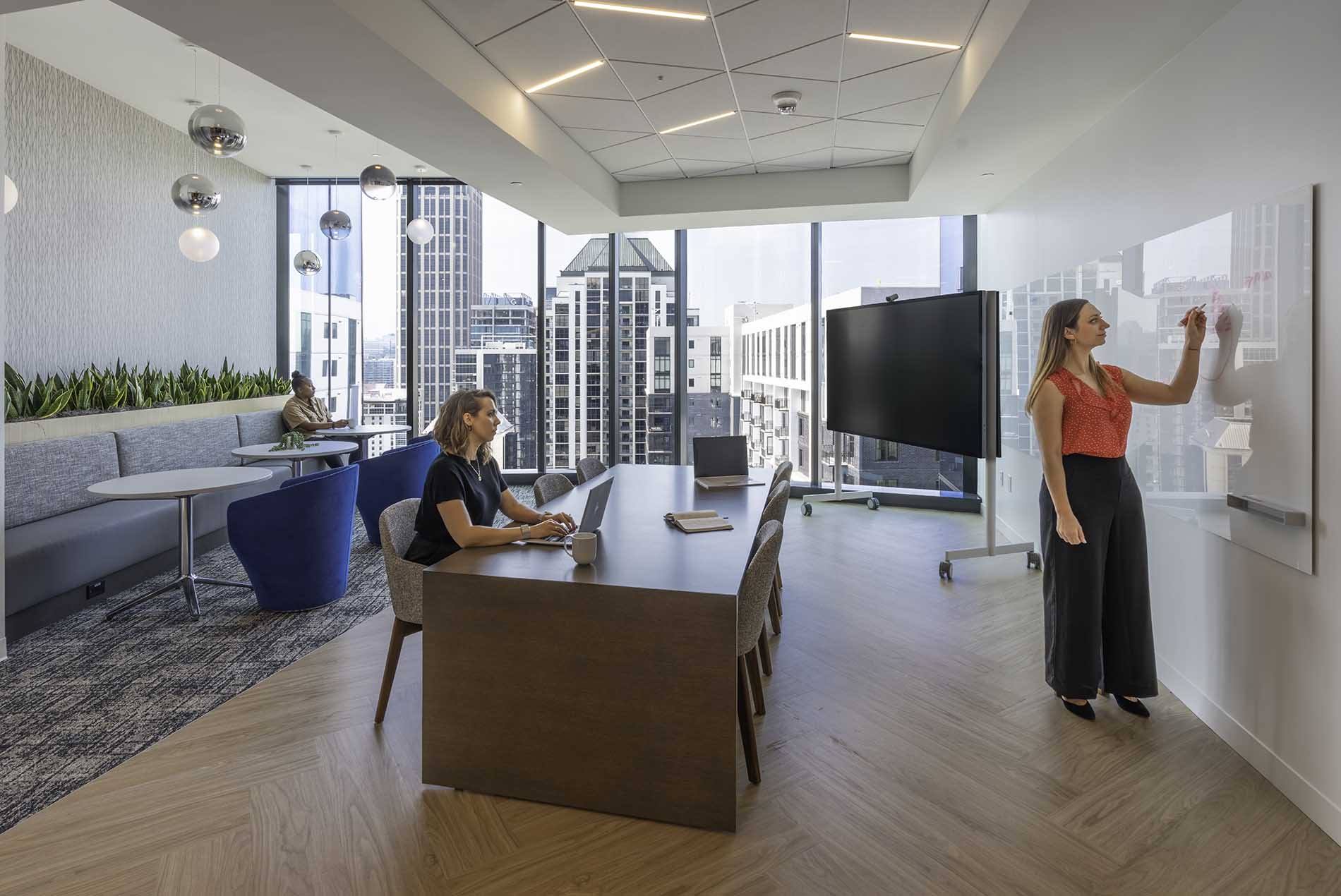
HOK also designed an NCE tenant fit-out for a confidential Texas company (below). The scope included a relocation of 500+ staff and the ability to accommodate substantial growth.
The single-floor workspace provides extensive conferencing, informal meeting and breakout areas, comfortable workspace and secure zones for sensitive materials. Four color-themed collaboration “parks” stand out on the main thoroughfares adjacent to office neighborhoods. Collaboration spaces prioritize varied furnishings to encourage movement and support inclusivity. Natural light and other biophilic design elements energize employees, while layered textures provide an aesthetic appeal while bringing a sense of balance and warmth to the space. The team integrated the company’s brand and ethos through design elements including specialty lighting.
The design team adapted the space to the company’s evolving work culture by optimizing it for both traditional in-person and hybrid work models.
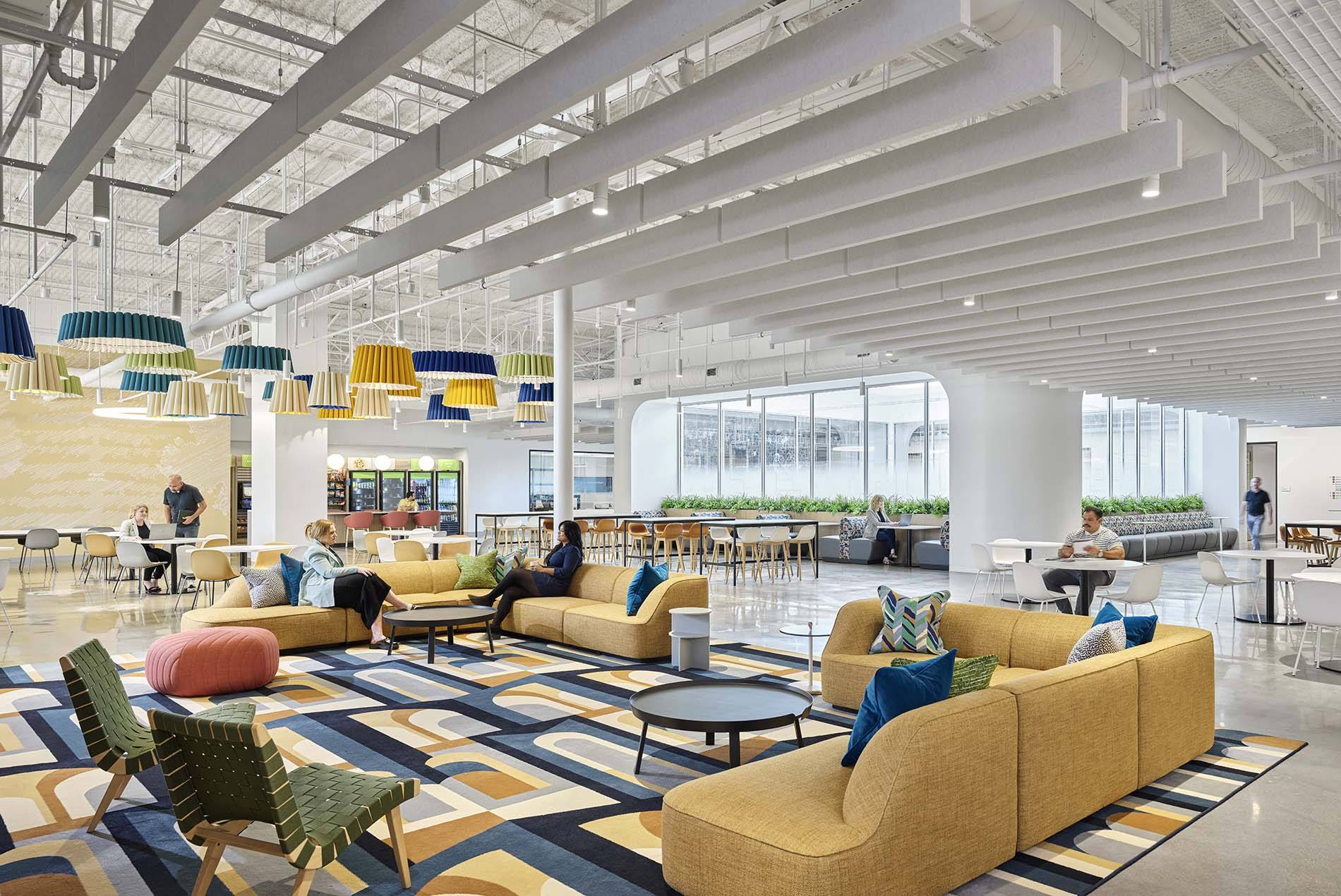
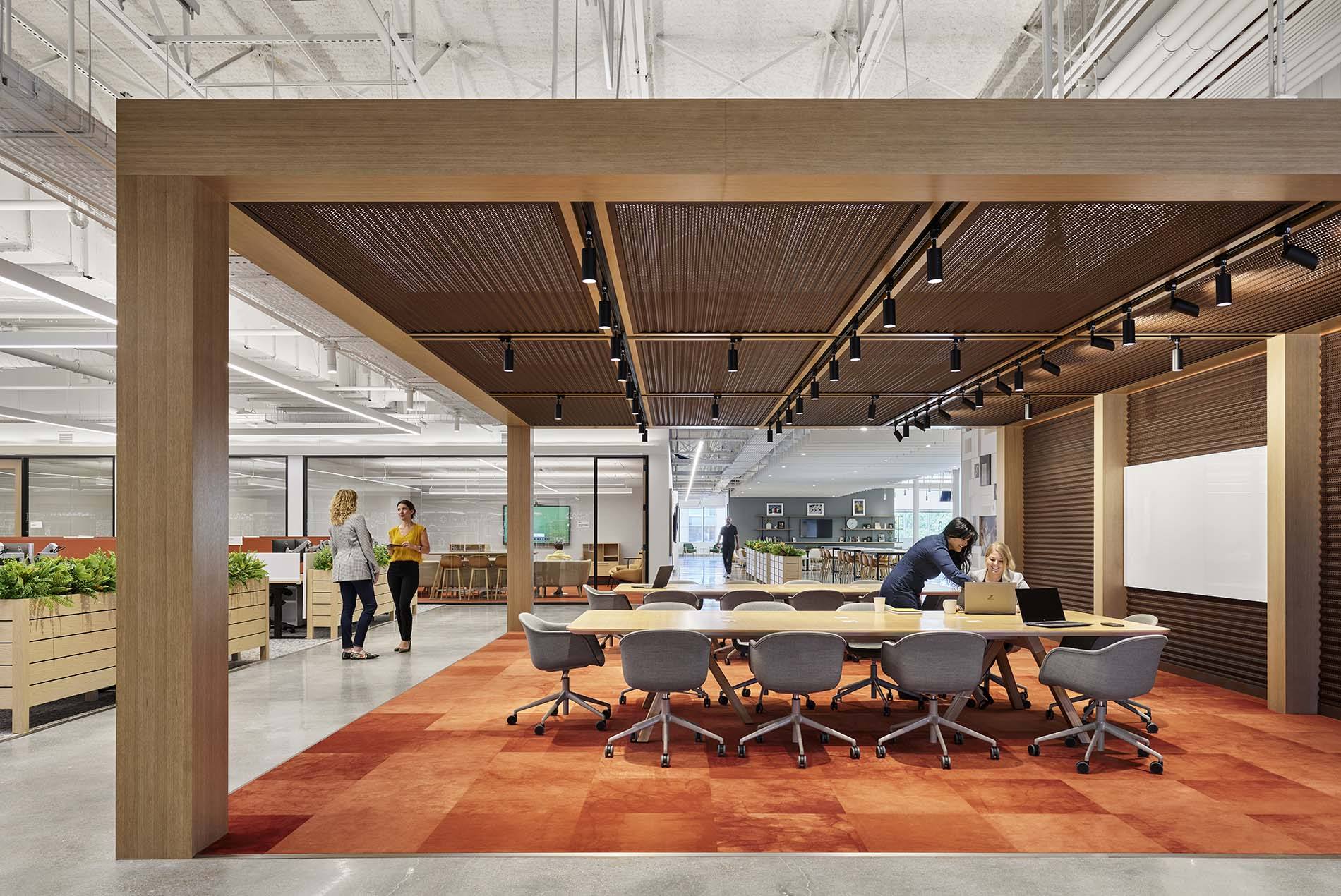
Maker Environments, Mobile Occupants (MEMO) Solution
Maker Environments, Mobile Occupants (MEMO) spaces amplify creativity and accelerate innovation. They represent the transformation of conventional spaces into dynamic hubs reminiscent of a “garage” for programmers, creatives or any employees seeking a scrum or makerspace feel. MEMO spaces are especially popular in sectors prioritizing rapid development. They also are gaining traction in Asia as “agile program spaces.”
Our team used a MEMO-based approach for the design of a 29,000-sq.-ft. technology center for Microsoft (above) in St. Louis’ Cortex Innovation Community. The design embraces Microsoft’s pioneering brand and innovative approach while instilling a sense of pride and culture among staff. The user experience mimics the product innovation evolution—from origin to future state—through the use of three distinct zones:
- Interactive center
- Envisioning center
- Makerspace
The design connects the space to the region’s geography, history and culture. Circulation mimics the flow of the nearby Mississippi River, with a singular path unifying the visitor experience while allowing moments of interaction. Natural tones, textures and details extrapolated from the river are woven throughout the space.
The Hub-Spoke-Home Ecosystem
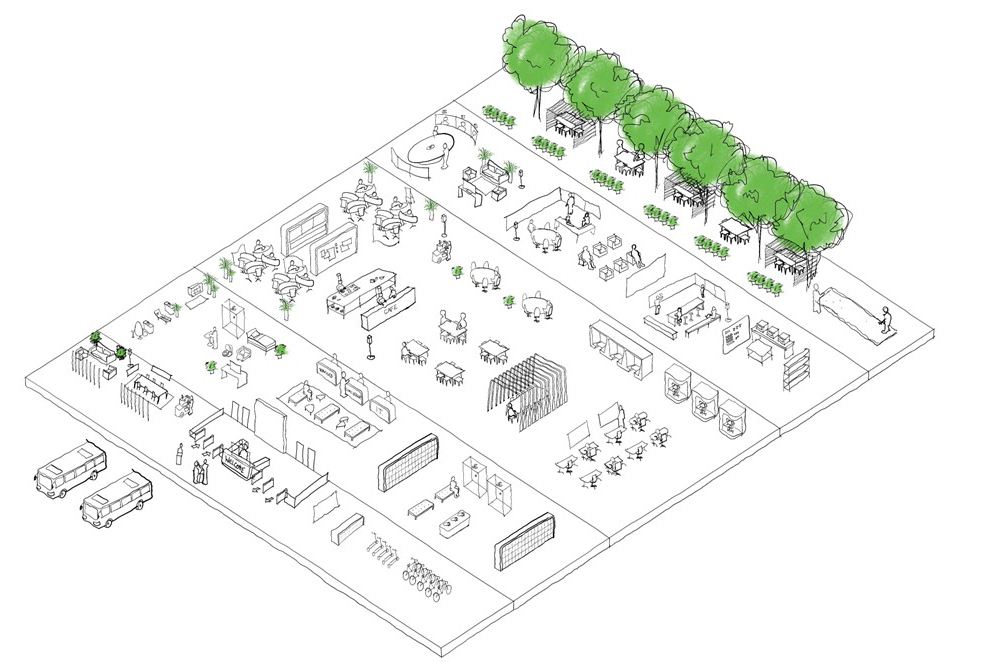
Companies are re-envisioning a “workspace ecosystem” that holistically caters to organizational and team needs. The modern work ecosystem has three main places:
- Hub (above): Serving as the organization’s heart, the Hub embodies the company culture. It’s a convergence point for employees and clients, functioning as an engagement center and innovation nexus.
- Spoke/Satellite: A relaxed setting for employees to engage with colleagues and clients. It doubles as a gathering space that provides individual workspaces for those not anchored to the Hub, offering an alternative to the home setting. They are often found in coworking spaces.
- Home: Dedicated to remote work, this is for employees who opt out or can’t access a central location. This environment is optimal for focused individual work or virtual meetings when on-site presence isn’t required.
Immersive Environments
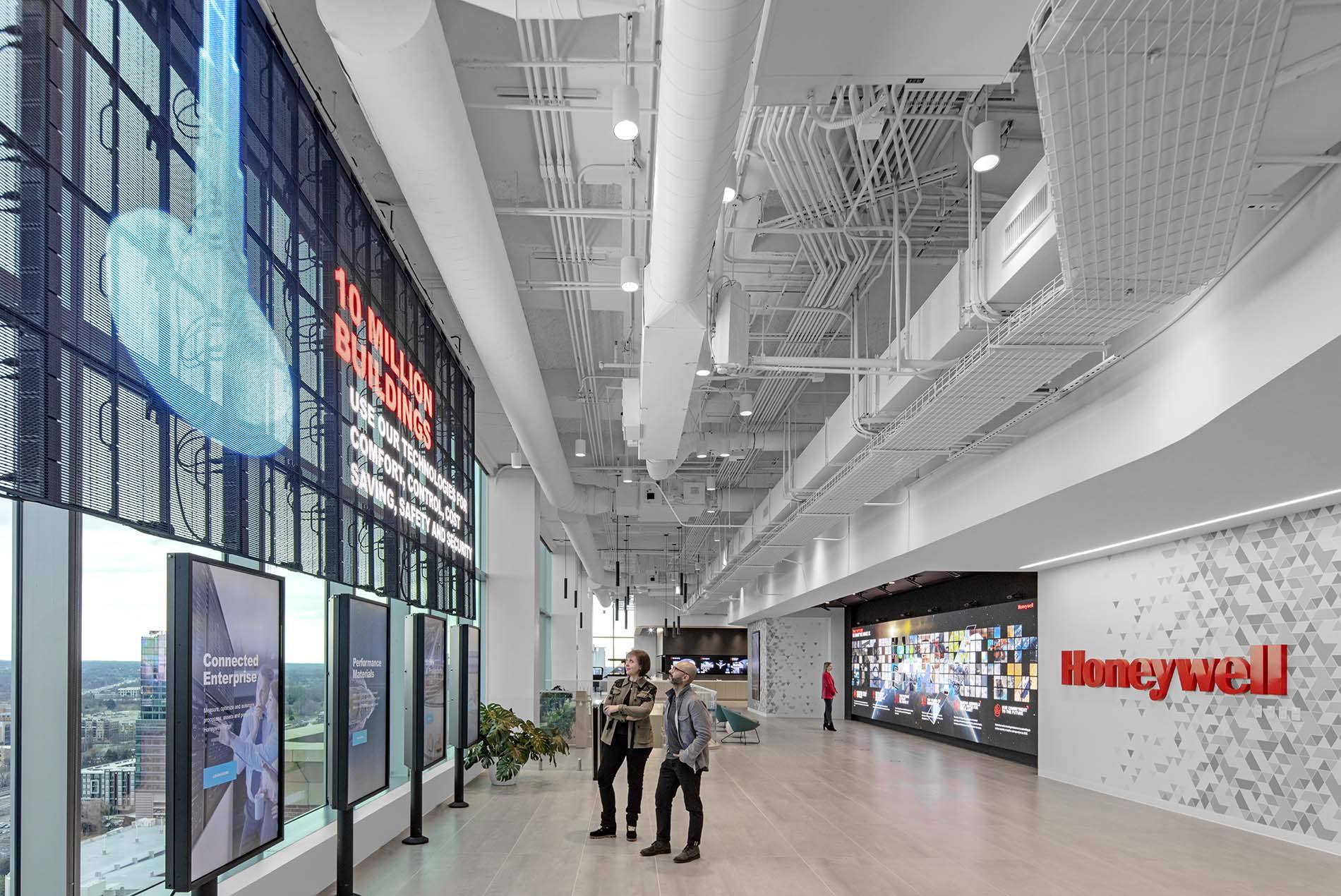
Immersive Environments pull from the best workplace lessons and tailor them to a company’s needs—creating compelling, branded places.
Honeywell’s new global headquarters (above and below) accelerates its transformation into a leading technology company. When the Fortune 500 company relocated from the suburbs of New Jersey to Uptown Charlotte, it invested in a futuristic, amenity-filled headquarters that drives innovation and attracts top talent. The 10 stories of office space can accommodate up to 1,200 employees.
The design captures the breadth of Honeywell’s brand, its service offerings and its impact on the world in a fully immersive space. Every floor functions as a “living lab” embedded with Honeywell technologies. These smart building technologies combine with sustainable features to create a healthy, LEED Gold-certified interior. Sensors integrated into light fixtures monitor occupancy, temperature, carbon dioxide levels and more.
A Customer Experience Center (CXC) on the top floor showcases Honeywell’s products and ethos. An interactive Immersion Room creates a customizable audiovisual experience with imagery on all four walls. In partnership with a digital design firm, the design team charted journey maps for various users of the CXC, from customers to global executives.
Consistent branding elements—from Honeywell graphics to custom illustrations—define an authentic client experience. Signage, logos, wallcoverings, film on glass, artwork and more help realize the vision.
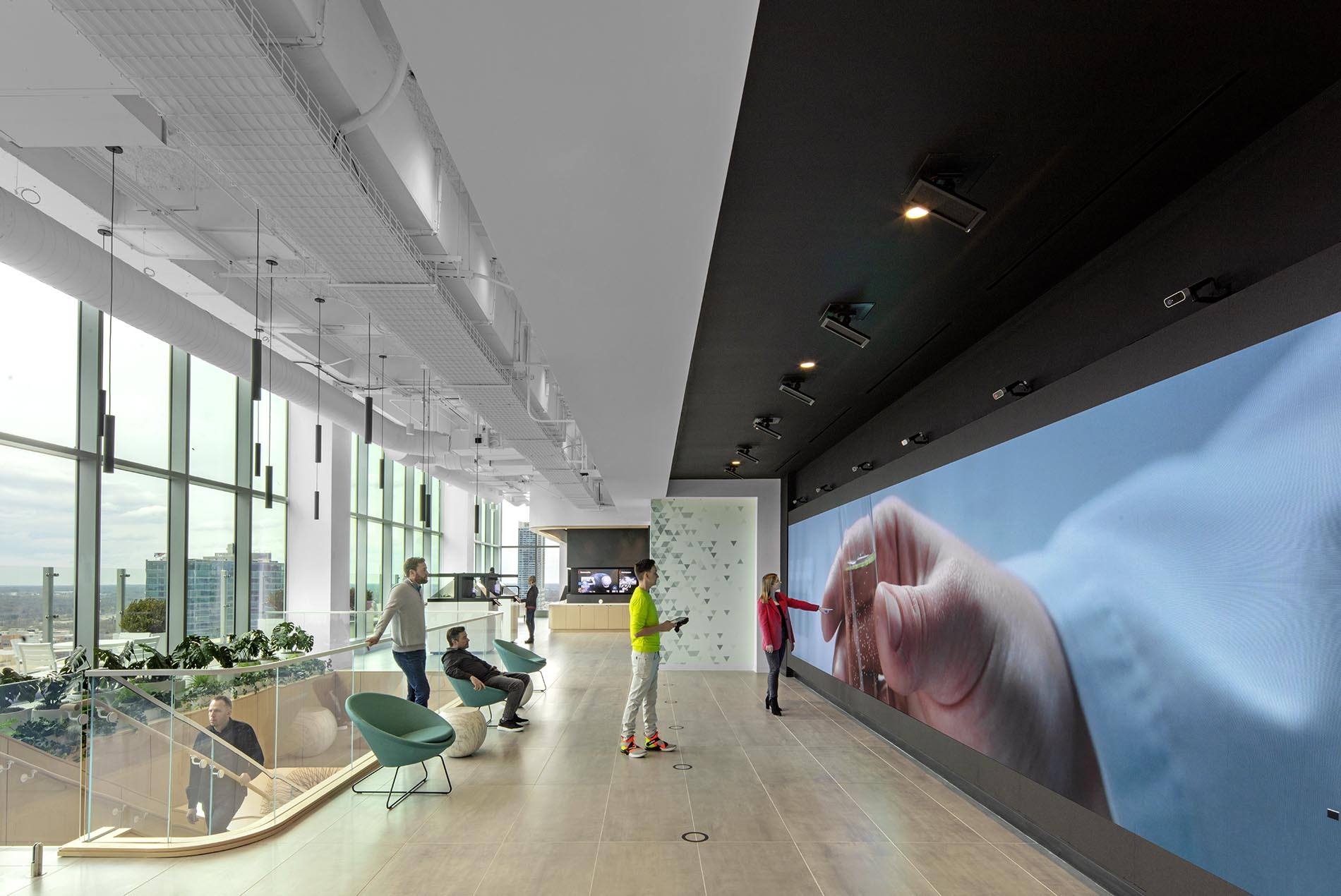
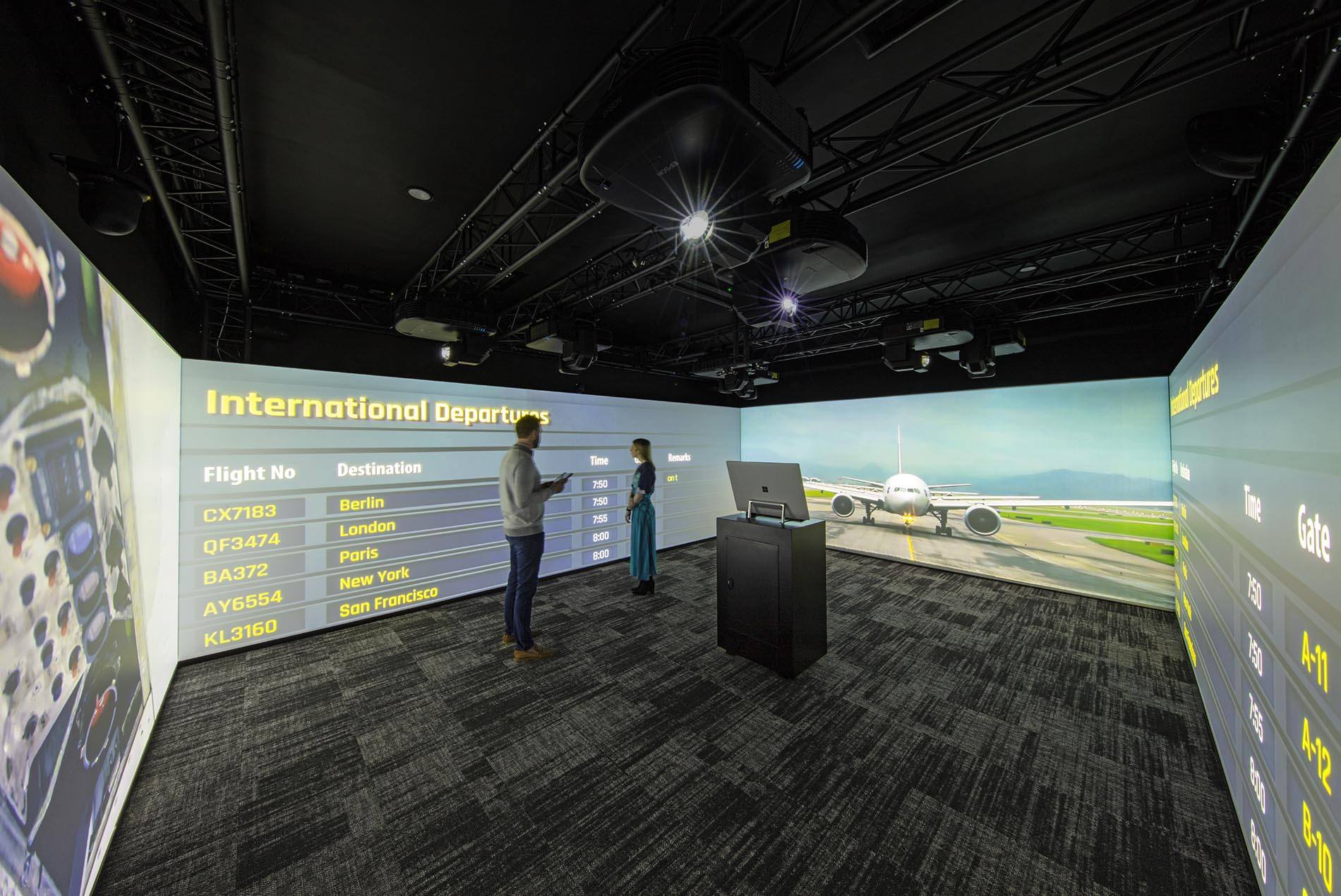
Mitigating Office Distractions
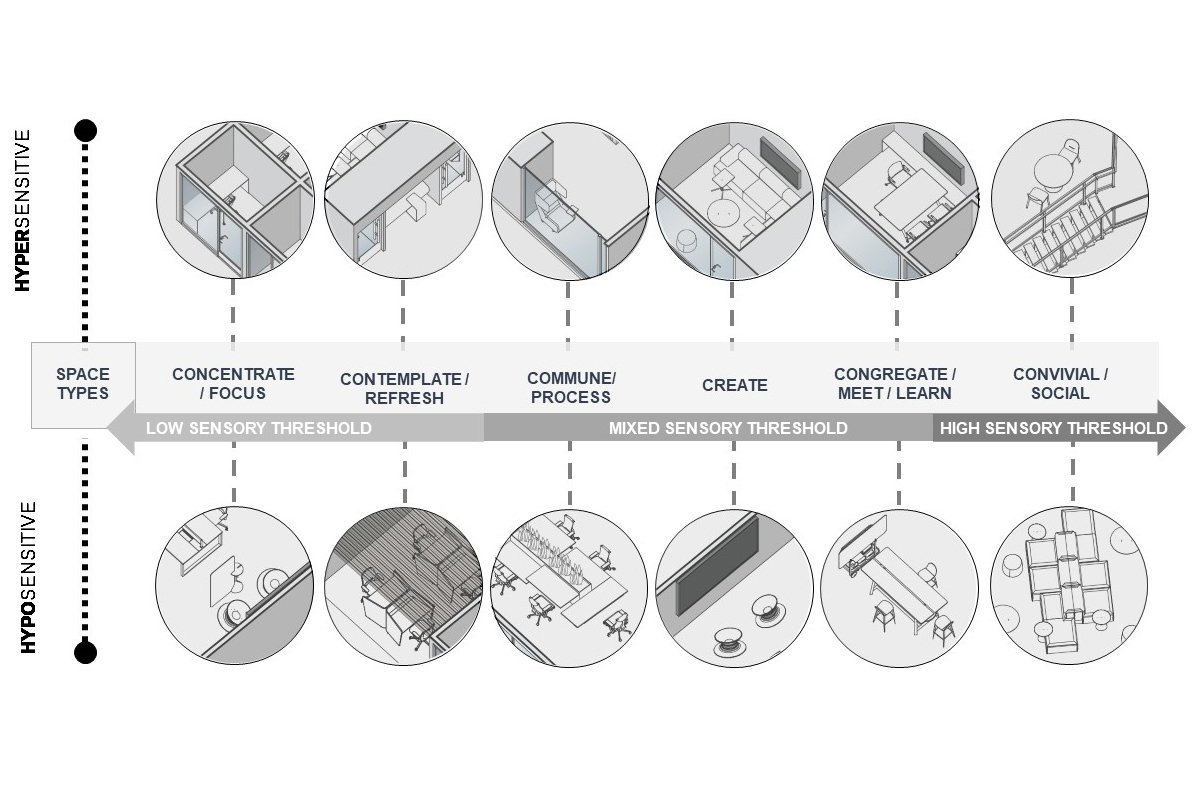
Open environments do raise acoustic concerns. A common myth suggests that offices are too loud and employees want silence. But stark silence is often more distracting than constant ambient noise. Many modern workspaces suffer from a lack of general background sound that allows for distinct conversations, which usually are more distracting than a consistent ambient sound. Effective neighborhood designs create various zones that enable different work modes and allow employees to manage distractions.
Beyond acoustics, factors that lead to dissatisfaction include bad work habits, environmental discomforts or even negative employee attitudes. A single disengaged employee within a 25-foot radius can detrimentally affect numerous colleagues.
In an era of heightened environmental sensitivity, designers must address sensory processing needs. Workspaces should have the right settings for employees across the six work modalities (above).
Proper spatial sequencing and zoning ensure teams can readily locate optimal settings with the right acoustics, lighting and energy (below).
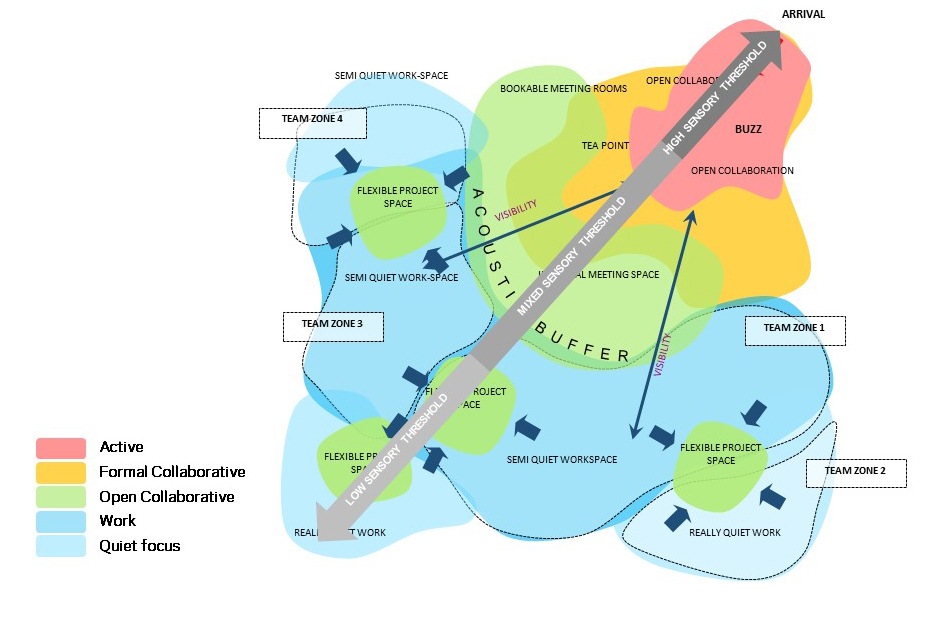
Let's Connect
The modern workplace is in flux. As we move beyond “open plan” to purpose-driven design, it’s essential to keep reevaluating and adjusting. Different businesses always will have different needs. But by learning from what does and doesn’t work and focusing on tailored spaces, workplaces can become powerful assets for organizations.
For more information about how HOK approaches the design of effective open plan workspaces, please reach out to:
Kay Sargent, FASID, FIIDA, CID, LEED® AP, MCR.w, WELL AP, Director of Workplace, Global, at kay.sargent@hok.com.
Betsy Graham, ASID, IIDA, Director of Interiors, Atlanta, at betsy.graham@hok.com.
